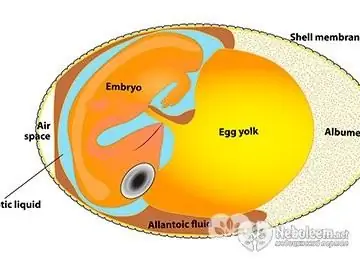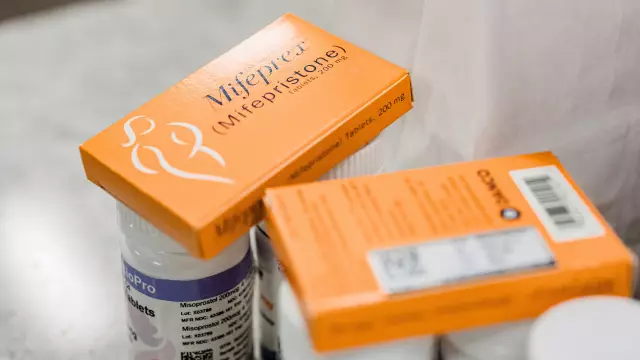- Author Rachel Wainwright [email protected].
- Public 2023-12-15 07:39.
- Last modified 2025-11-02 20:14.
Early abortion
An early abortion can be done at the request of the woman for up to six weeks.

For its implementation, three methods can be used - scraping, vacuum aspiration and medical miscarriage. An abortion at 2 weeks is fundamentally different from an abortion at 4 weeks and later.
Early abortion techniques
The most famous classic method of abortion is surgical abortion or curettage. It takes several hours for a woman to be in the hospital, as well as intravenous anesthesia. With special forceps, the cervix is expanded and with a special curette, the ovum and the upper layer of the endometrium are scraped out of the uterine cavity.
After curettage, bleeding or even perforation of the walls of the uterus with a gynecological instrument may occur. At a later date, hormonal disorders may develop. For six hours after the intervention, the woman needs rest in order to finally get out of anesthesia and minimize the risk of bleeding opening. Early abortion rarely causes such a complication.
Often, after a surgical abortion, a woman is prescribed a prophylactic course of antibiotic therapy, as well as hormonal contraceptives to protect herself from unwanted pregnancy and normalize hormonal levels. Before the final cessation of secretions - within about ten days - it is necessary to stop sexual relations, bathing in ponds and a bath, to exclude the possibility of infection.
Before curettage, a woman undergoes a laboratory examination:
- Determine the blood group and Rh factor;
- Gynecological smear;
- RW blood test;
- HIV blood test;
- Blood test for HBS.
In addition, an ultrasound scan is required to determine the localization of the ovum and to clarify the gestational age.
According to the results of such an examination, contraindications for abortion can be identified, for example, a low level of hemoglobin against the background of severe toxicosis, an acute infectious process, etc.
Abortion at 4 weeks
Another way to perform an early abortion is vacuum aspiration or mini-abortion. It is carried out at 7-10 days of delay, that is, at 4-5 weeks of pregnancy. The technique of vacuum aspiration is the suction of the ovum with a special probe from the walls of the uterus. With a mini-abortion, the uterine cavity is not injured, and the intervention itself can be performed with lighter anesthesia. Its total duration does not exceed seven minutes.
In some situations, mini-abortion is not enough and it is not possible to completely remove fetal tissue from the woman's uterus. In these cases, additional scraping is performed. Even after successful vacuum aspiration, as well as after a full abortion, antibiotics and adequate contraception are prescribed.
Abortion 2 weeks
Medical early abortion can be performed even on an outpatient basis, but always under medical supervision. Its advantage is the absence of any medical manipulations. Specific medications cause miscarriage. These medicines are not sold in pharmacies, even with a prescription, but can only be dispensed by the attending physician.
The indications for an early abortion, which is carried out by a medical method, is the gestation period. It can be performed as early as the 2nd week, and the maximum gestational age should not exceed six weeks. In this case, the size of the ovum should be no more than 20 mm.
In some cases, an early abortion that was carried out with the help of drugs may not be effective enough and not lead to complete removal of the ovum. In such situations, a full-fledged surgical abortion is additionally performed. Even a successful medical abortion has a significant effect on a woman's hormonal status and requires the subsequent appointment of hormonal contraceptives.
Early abortion: how to prevent
To prevent a situation when artificial termination of pregnancy is necessary, it is recommended to monitor the regularity of menstruation, especially if pregnancy at this stage is not desirable.

It is also important to use a reliable method of contraception. The attending physician will help you choose the most suitable and effective method. If an unwanted pregnancy still occurs, then you should consult a doctor as soon as possible in order to terminate it at an early date.
The day following an early abortion, like any other artificial termination of pregnancy, is the day of a new cycle, when the next pregnancy may already occur, so it is immediately necessary to choose the optimal method of contraception.
Early abortion: warnings
Some women mistakenly think that early abortion is not difficult to do on their own at home. Such an event can cost the life of a failed mother or cause serious harm to her health. In no case should you try to cause a miscarriage, but without fail seek medical help.
Found a mistake in the text? Select it and press Ctrl + Enter.






